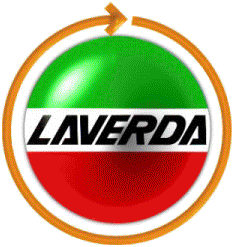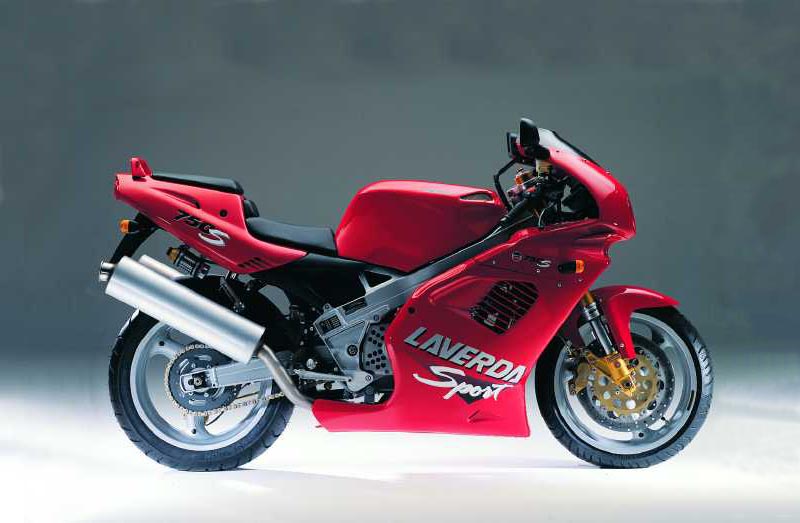


|
|
|
|
ROAD TEST
Engine start After checking of the quantities of fluids (fuel, engine oil, coolant, brake and clutch oil), tyre pressure and correct chain adjustment, you can proceed to start the engine as follows: Don't look for the fuel selector, there isn't any ! Don't look
for the kick pedal, there isn't any either ! 1) Turn contact
key ON and check neutral warning light has come on 2) Wait until injection system is under pressure (slight whistling sound of the fuel pump) 3) On your right-hand side, make sure that the circuit-breaker is set to RUN and that the light switch is turned OFF. 4) On your left-hand side, move choke lever all the way down and pull in the clutch 5) Press the START switch 6) Warm up the engine before revving it up
Moving into city traffic When handling the bike idle, you realize that it is not the lightweight category (452 lbs with full tank) and its poor turning circle is more than a handicap if you want to make a U turn. Be also aware that front brake should be applied with gentle pressure. As soon as you get moving with the bike, this feeling of a heavy weight vanishes right away and you find yourself all of a sudden riding a swift and easy to handle motorcycle. First gear is engaged with a thump, which sometimes leads the engine to stall when cold and this might eventually get on your nerves ! To avoid this snag, after engine start I will usually warm it up at idle for a couple of minutes (the time for the water temp. indicator needle to rise) and run first half of mile with choke ON. In fact, it is not a genuine choke strictly speaking (I mean a device enriching the mixture), the bike being fuel injected. The lever has effect on throttle control cable, thus rising idling speed slightly. It becomes soon evident that the engine is reluctant to run at low revs. This restricted spread of torque is actually the engine major fault. Besides, it features a fantastic rugged character from 4.000 revs up ! When moving into city traffic, it is undoubtedly a great inconvenience urging frequent gear drop down to avoid unpleasant drive jerks. Staying cool among congested traffic when following slow moving car files is not that easy ! Running such a slow pace, the engine warms up quickly remaining within normal temperature range though due efficient cooling system, but city commuting is definitely not the bike's cup of tea anyway !
Away from built-up areas Here we are, that's the very place which the bike has been designed for ! Once freed from traffic flow, it is pure joy and real delight in plenty ! The bike responds to the slightest touch of the accelerator grip. Throttle control is both soft and direct providing immediate response. Gears are smoothly engaged with crisp and easy selection and gear ratios have been properly set througout the speed range. Wrapping the throttle open results in overwhelming acceleration from 1st to 6th gear all the way up. Unless you keep your self-control, you are soon put into orbit by a restless missile-launch-type drive with speedometer reading far beyond road speed limits. 90 km/h (55 mph) legal speed limit squares with a bit low rev. Instead, a speedometer reading of 110/120 km/h (70/75 mph) is more in keeping with what appears to be a quiet and smooth cruise. Overtaking is a snap if you see to it that the right gear be engaged and tachometer read at least 5.000 revs when initiating acceleration. Engine drive is then breathtakingly powerful and you speed up in a flash from 70/75 mph to the three figures in a spellbinding lyrical climax led by the TERMIGNONI exhausts. Speed is reduced as soon as you ease the throttle with the help of efficient engine braking. Engine is backfiring sometimes when throttling down, it is nothing serious ! If it's getting worse, you will have to report this fault to your mechanic and injection tuning will most likely cure the trouble. In case of emergency or high speed riding, stopping power is quite reliable, but be aware however that braking system does not incorporate anti-skid device ! Dropping down the gears is easy without cracks, wrong engagement, false neutral or other quirks of that same kind if gear is shifted with right engine speed (I did not experience gear shift in track conditions). Like for any other sportsbike, damping is good as long as road surface has not been damaged. When getting to small lanes in poor condition, suspensions being set on the firm side, much of the road jolt is passed directly to the rider's bum and lumbars. Such uncomfortable ride becomes eventually painful and the wise rider will hasten to restore smoother riding on the even surface of a better maintained road or highway. Though keen on the sports riding style, I am not an expert in tight corners and therefore I have been unable so far to either put the bike's roadholding ability at fault or to notice any lack of grip on the dry . Seating position in solo is correct, propped up against the passenger seat, the toes on the footpegs and the heels leaning slightly on the exhaust cans. The handlebars made of two sections are adjustable. While riding into town or at low speed in an upright seating position, handlebars are high enough to ensure comfort. However, they turn to be uncomfortable when riding at higher speed in a bent over position to reduce wind pressure. The 750 STRIKE is a "naked" streetbike and riding beyond 140 km/h (85 mph) becomes soon an ordeal due lack of fairing . At high speed, the bike is sensitive to side wind gusts leading the steering column to rock a little bit just to remind you that you are exceeding by far the speed limit. Average fuel burn is moderate with regard to performance (about 6,5 liters per 100 km in road use) and allows to cover a distance of more than 200 km (125 miles) before low fuel warning light comes on. There are only 3 liters left in the tank at that moment before running short of gas, which means just a bit more than 40 km (25 miles) to refuel. Oil consumption is insignificant. More than 600 miles were run with my bike since last oil change and the gauge level hasn't shifted at all.
Comfort The fairing and a few other details being excepted, the 750 STRIKE features a frame and engine much similar to what is fitted on the 750 FORMULA. Though it is "naked", one should regard the 750 STRIKE as a sportsbike anyway, with all related peculiarities whether good or bad ! As far as comfort is concerned, the bike is badly off: - no storage space available under the seat, it is the tank place ! If you want to carry a U-lock for instance, you will have to find the relevant place to secure it to the frame (I will revert to this matter since I am considering to buy one before next summer season, I promise ! ) - If you are going on a trip (yes, why not? the use of the STRIKE is not limited to performing burns by café terraces !), you will have to outfit the bike with additional equipment like a tankbag or sidebags. - Carrying a passenger is possible for short trips, the bike featuring passenger's seat and footrests. Be aware though that your passenger will not feeel at ease, astride up on jump seat, jutting over pilot's head with wind pressure streaming on his (her) helmet. Your unfortunate passenger will be doomed to constantly cling to side grips on back seat, stressed by successive accelerations and braking, in the end it turns out to be exhausting ! - Lack of central stand impels to buy a paddock stand when the bike is parked in the garage or just for easier maintenance. - Mirrors are large enough, unfortunately vision is slightly blurred with remaining engine vibrations. - the instrument panel includes a speed indicator with totalizer and trip meter and also a tachometer, both enhanced with white lining (no digital reading fortunately but the "read-it with a needle" much neater looking kind !). There is also a water temperature indicator (because of the cooling system ), but regretfully no oil pressure indicator, no oil temperature indicator either, no voltmeter and to top it all off, no fuel gauge, what a shame ! However, there is a low fuel warning light coming on when about 3 liters are left in the tank, just enough for you to reach the nearest gas station. Plus a neutral warning light, a turn signal warning light and a high beam warning light. The dashboard is nicely back-lit when sidelights are switched on. There is another remaining warning light, the battery charge warning light I guess (it is inoperative on my bike! ) - Ignition is switched on with a key. 4 positions contact key: 1) Run - 2) Stop - 3) Steering lock - 4) Parking lights and steering lock - high beam
flash control on left hand side handlebar |
![]()

|Welcome|Why ride a LAVERDA ?|Specifications|Road test|Trouble issues|Spares| |Maintenance|Breakdowns|Gallery|Calendar|Videos|Links|Contact|
This page was last updated on 05/25/2004
![]()